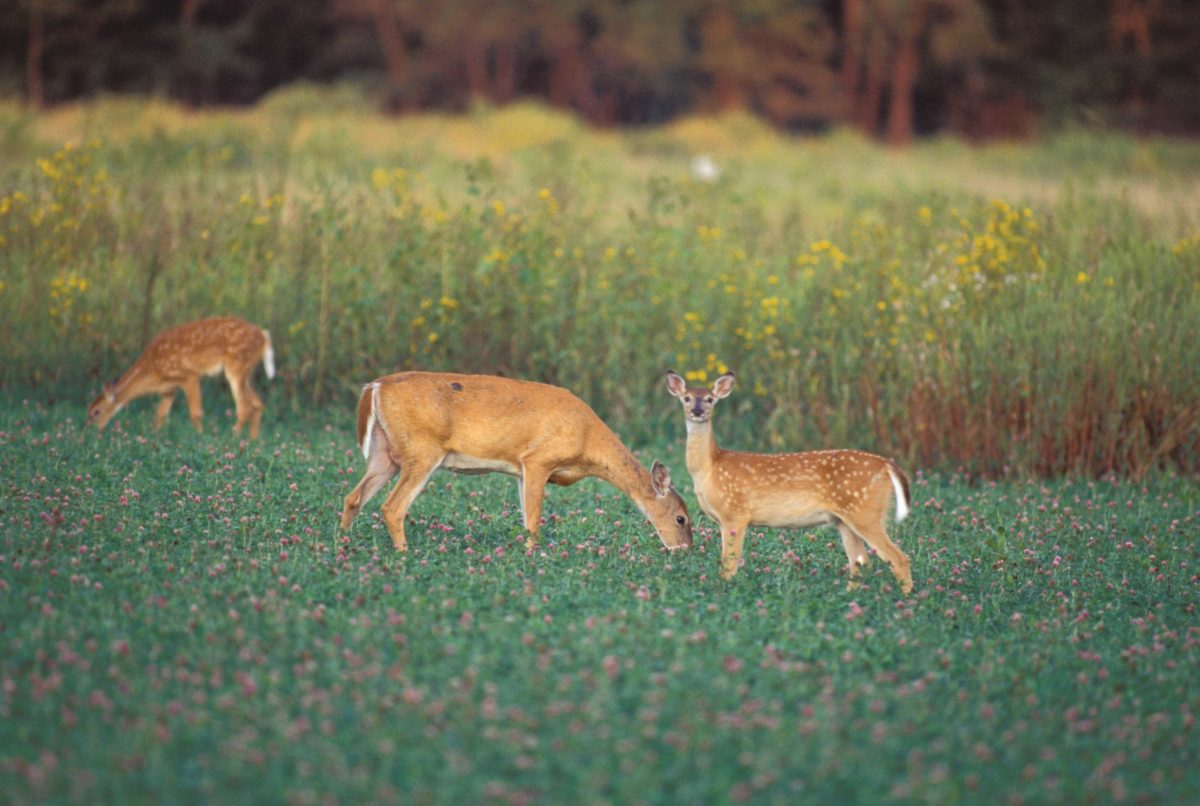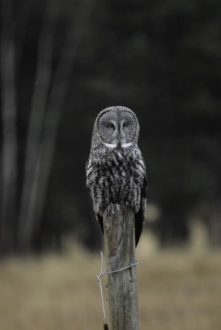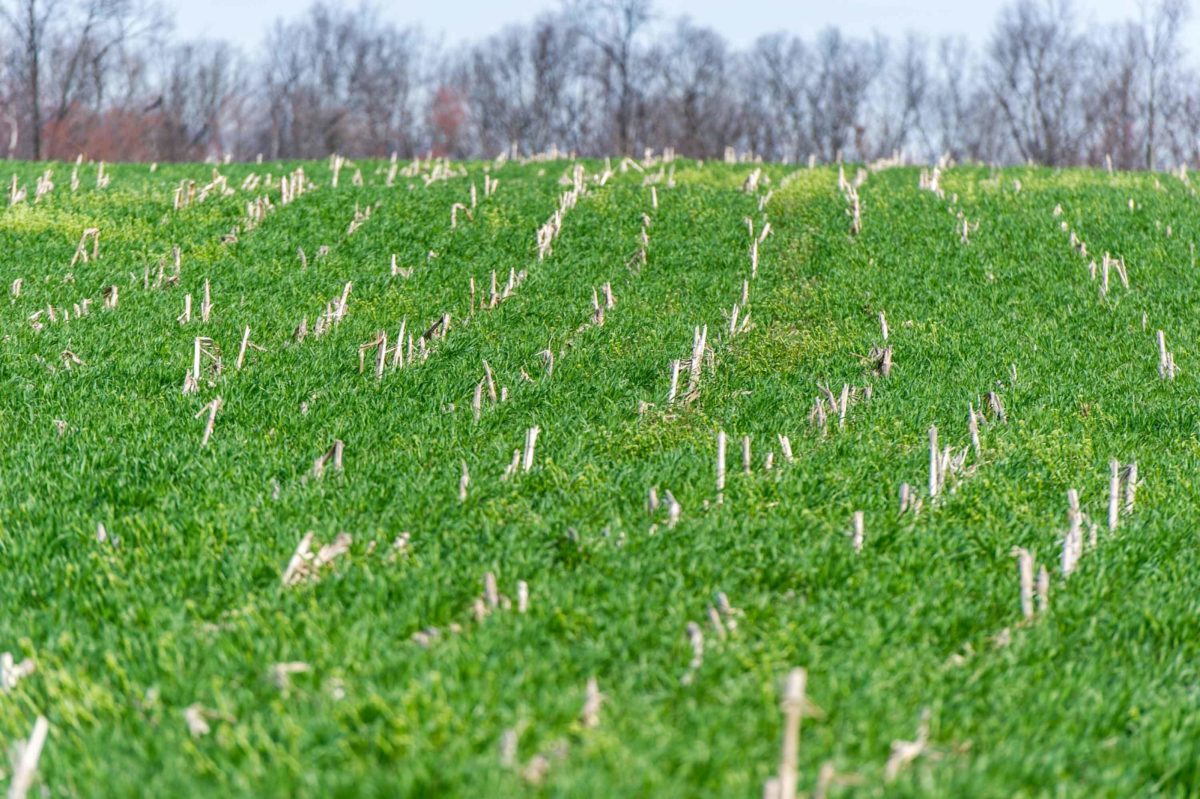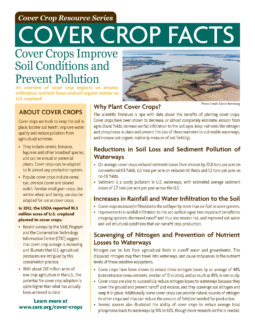The relationship between cover crops and wildlife as both a hunting opportunity and potential pest.

Download this fact sheet (PDF). This fact sheet is part of the Ecosystem Services from Cover Crops fact sheet series.
Promote Wildlife with Cover Crops
Cover crops are usually planted to prevent erosion and increase soil health, but they can also provide valuable habitat for various wildlife. Food and shelter are two vital resources that cover crops can provide wildlife when conventional crop fields are bare. Those interested in managing their land to promote hunting opportunities can take advantage of cover crops. However, population increases in deer, rabbits and small mammals can lead to crop damage, therefore cover crop management should be considered alongside other land management practices to mitigate potential problems.
Feeding Wildlife
The clearest benefit of cover crops to wildlife is additional food during parts of the year when cash crops are not growing. In fact, mixes of cover crops often contain similar plants as food plot mixes meant to boost deer health and numbers. Many other wildlife species will benefit as well.
- Deer may browse on many of the species planted as cover crops. They are attracted to sunn hemp in particular.
- Small mammals such as rabbits, field mice and voles can feed on cover crops and any seeds they produce. Their presence along with added insect biomass on cover cropped fields will provide more food for predators like coyotes, foxes and bobcats, contributing to a more stable ecosystem.
- A diverse mix of cover crops instead of single-species stands means a more varied and nutritious diet for wildlife.

Wildlife use the “Cover” of Cover Crops
Besides food, cover crops can offer shelter and homes for wildlife.
- Rabbits and other small mammals may be able to build nests in thicker stands of cover crops during their breeding season.
- Vegetation hides prey animals from predators like raptors, providing the cover that many species seek.
- Deer will bed down in cover cropped fields, which would be unlikely in a bare field. Taller cover crops might also provide a place for does to safely stash fawns.
- The plants in diverse cover crop mixes offer more structural diversity, which may aid wildlife moving through or taking cover in fields.
- Even after a cover crop is terminated, the ground cover residue can allow for a wider variety of insects and small creatures that are part of a healthy food chain.
Too Much of a Good Thing: Wildlife as Pests
Hunters love to see deer during hunting season, but farmers may be less enthusiastic about their presence if they are eating crops. On large grain farms, wildlife damage to crops is seldom a significant issue, but it can be a problem on smaller farms, including high-value horticulture operations. Voles in particular, which benefit from the cover and food provided by cover crops, are sometimes a concern for farmers. Research on the actual impact of voles is ongoing. Fortunately, there are farm management practices that can mitigate wildlife damage to crops and boost farm diversity.
- Deer can be lured away from crop fields by planting sunn hemp or other desirable forages on field edges.
- Native grass and wildflower strips, edge feathering and other wildlife habitat enhancements support a more diverse community of predators of small mammals such as snakes and weasels.
- Providing perches and roosts for raptors and owls can bring in natural predators that play a role in keeping vole populations low.
- Coyotes are the top predator in most parts of the country and will eat most mammals that consume crops. Their ability to control vole populations is still unknown, but they do hunt voles.
- If vole populations reach damaging levels, timely and judicious use of poisoned bait may help reduce crop damage. Using the most specific baits only where vole activity is concentrated will minimize accidental poisoning of other wildlife, including other small mammals and ground-feeding birds that consume insect pests.
About Cover Crops

Cover crops are tools to keep the soil in place, bolster soil health, improve water quality and reduce pollution from gricultural activities.
- They include cereals, brassicas, legumes and other broadleaf species, and can be annual or perennial plants. Cover crops can be adapted to fit almost any production system.
- Popular cover crops include cereal rye, crimson clover and oilseed radish. Familiar small grain crops, like winter wheat and barley, can also be adapted for use as cover crops.
